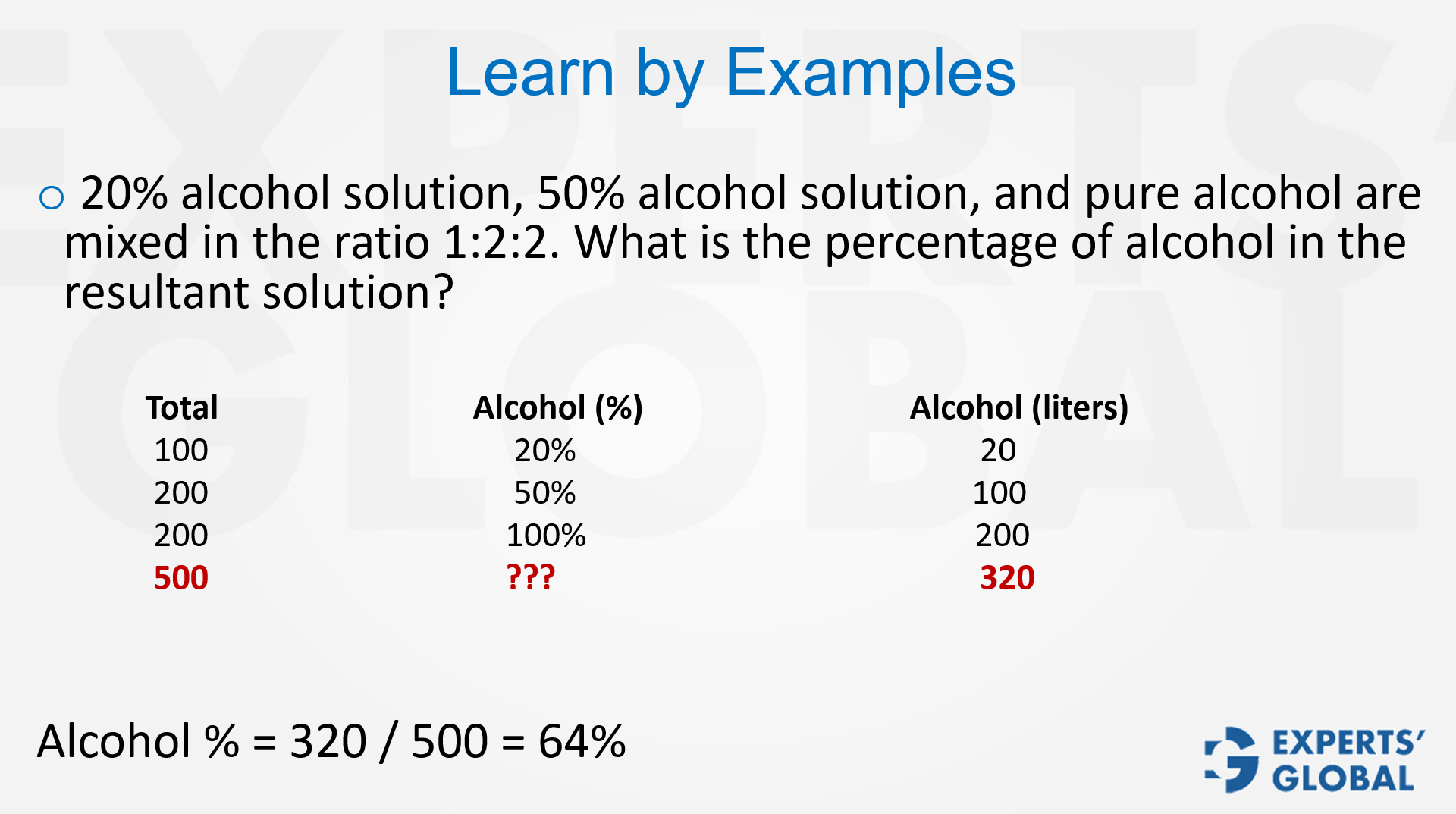Invest 30 seconds...
...for what may lead to a life altering association!
Help Line
- +91.8800.2828.00 (IND)
- 1030-1830 Hrs IST, Mon-Sat
- support@expertsglobal.com
...for what may lead to a life altering association!


On GMAT mixture problems with three or more components, assume convenient volumes that match the given ratio. Build a simple table of volume, percent, and pure amount for each component. Sum pure amounts and totals, then compute concentration as total pure divided by total volume.
Mixture and ratio-based solution problems often appear simple but can easily confuse students who try to solve them without structure. The safest way to approach them is to assume convenient values for the given ratios and then use a tabular layout to keep track of totals, alcohol content, and water content. This avoids mistakes and ensures clarity at each step. For example, when three different solutions are mixed in the ratio of 2:3:5, it is easier to assume volumes of 200, 300, and 500 liters respectively. Once assumed, applying the given percentage concentrations becomes straightforward, and the absolute quantities of alcohol can be computed. Adding these values together and dividing by the total volume leads directly to the overall concentration. Such questions train you to balance ratios, percentages, and weighted averages in a structured way. Consistent practice through quality GMAT preparation course together with a solid GMAT test series will help build this instinct.

Let’s understand this through an explanatory, simple problem:
Question: 30%, 40%, and 60% alcohol solutions are mixed in the ratio 2:3:5. What is the percentage of alcohol in the resultant solution?
Consider three solutions with concentrations of 30%, 40%, and 60%, mixed in the ratio 2:3:5. To simplify, assume their actual volumes are 200, 300, and 500 liters. Now calculate the alcohol content:
Adding them gives 480 liters of alcohol.
The total solution is 1000 liters, so the resulting concentration is 480/1000 = 48%.
Question: 20% alcohol solution, 50% alcohol solution, and pure alcohol are mixed in the ratio 1:2:2. What is the percentage of alcohol in the resultant solution?
The ratio is 1:2:2, with concentrations of 20%, 50%, and pure alcohol (100%).
Assume the volumes as 100, 200, and 200 liters.
Alcohol contents become:
So, total alcohol = 320 liters and total solution = 500 liters.
Hence, the overall alcohol concentration is 320/500 = 64%.

By assuming simple numbers for ratios and using a table, mixture problems reduce to clear, stepwise arithmetic. This method eliminates confusion, saves time, and ensures accuracy. Regular work on GMAT simulation strengthens this skill until it becomes second nature.
Mixtures teach a quiet discipline. Choose simple numbers, honor totals, and let each step reveal the whole. Life asks the same patience when paths and priorities combine. You set a base, weigh each part, and adjust with care. This habit shapes better choices in study and beyond. It steadies essays, interviews, and goals in MBA admissions and scholarships by turning scattered notes into one clear story. Keep a small table in your mind: intent, effort, feedback, and time. Rebalance, then move. Progress is a steady pursuit, not a rush. Clarity grows when you respect proportions, check your sums, and trust calm arithmetic.